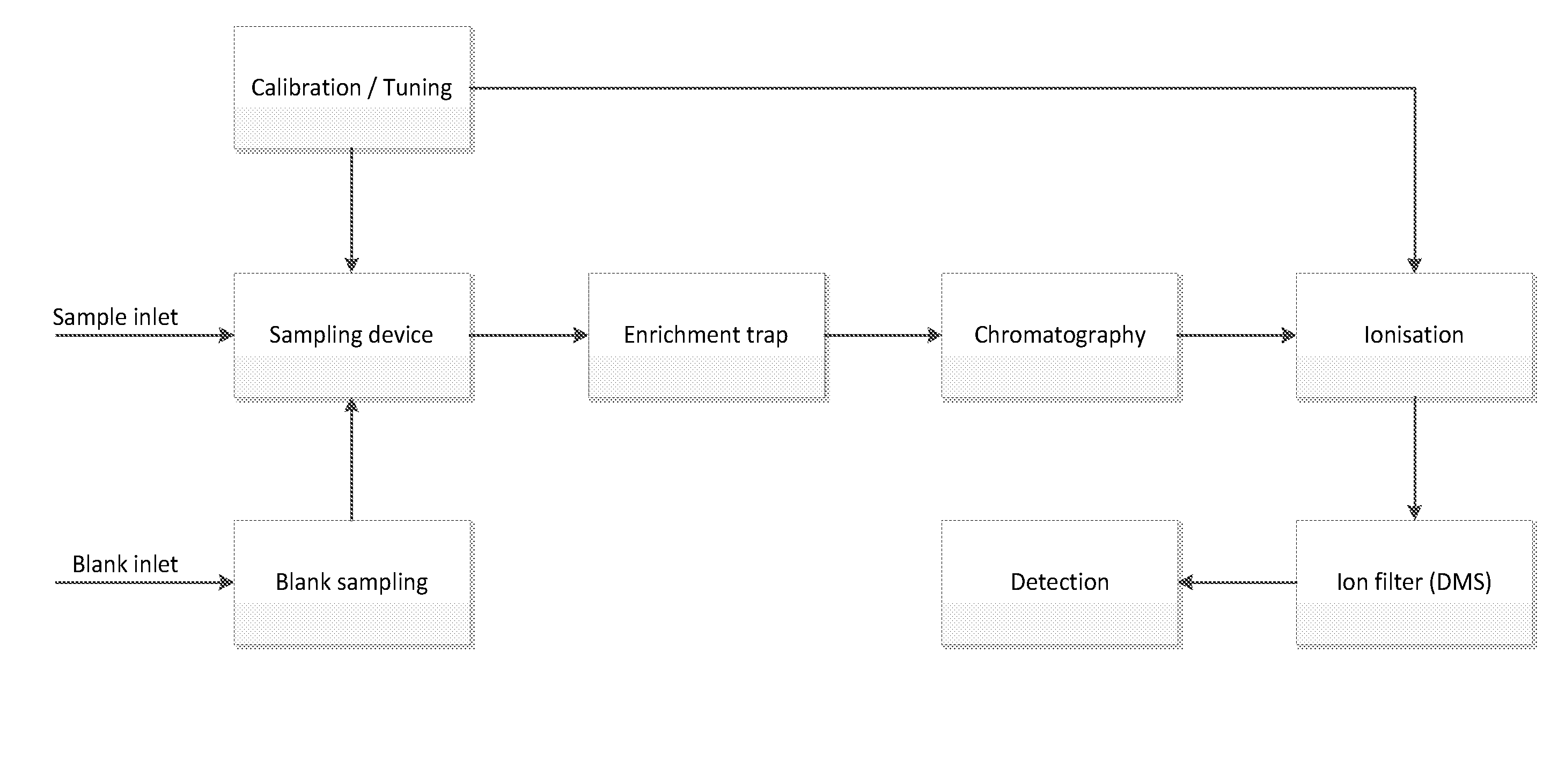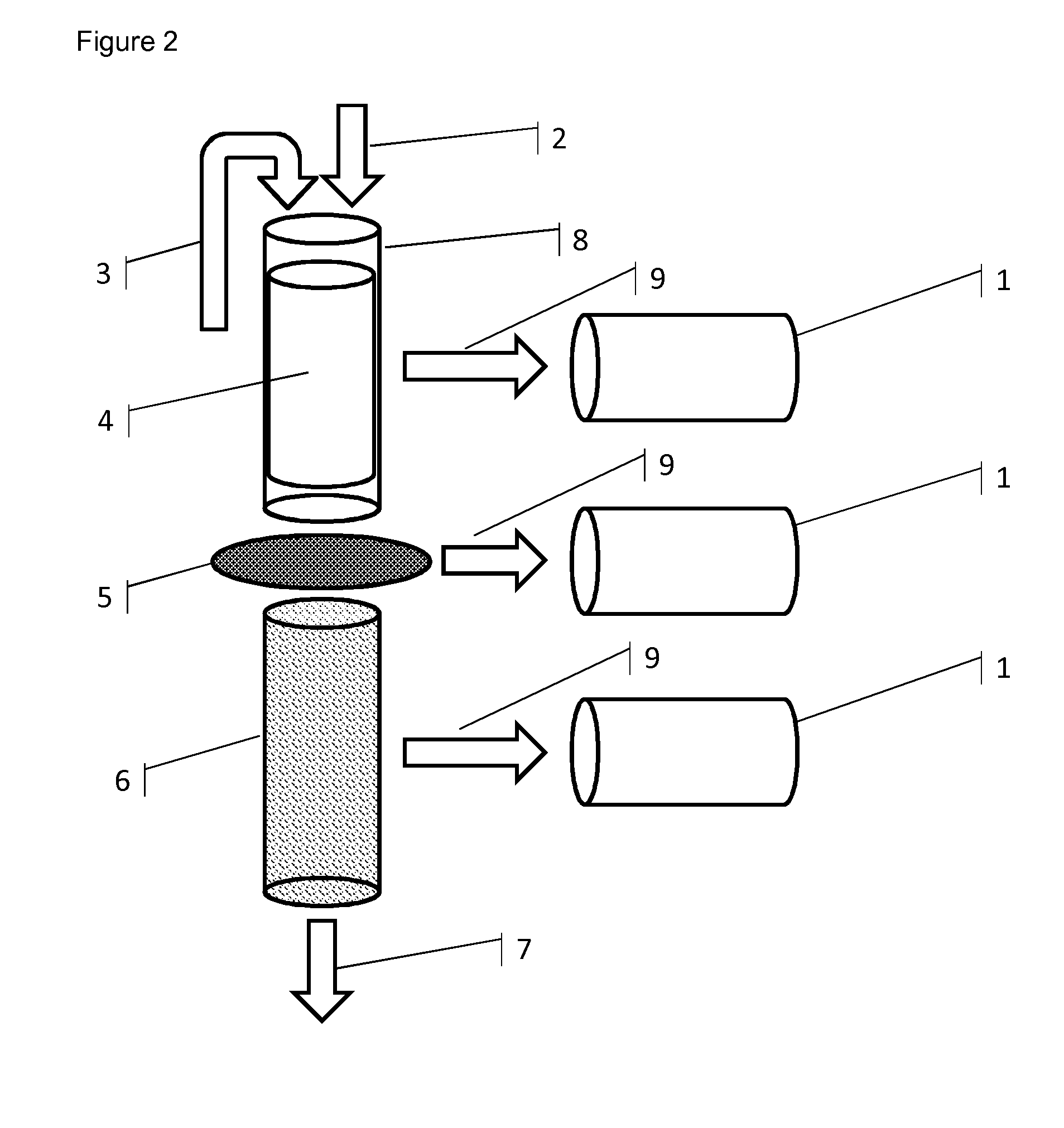Flow regulating system and monitoring device comprising said flow regulating system for the detection of air borne analytes
a flow regulating system and flow regulating technology, which is applied in the direction of liquid/fluent solid measurement, component separation, volume/mass flow by thermal effects, etc., can solve the problems of false positive results, high cost for users, and inability to identify individual chemicals, etc., and achieve the effect of adequate pumping performan
- Summary
- Abstract
- Description
- Claims
- Application Information
AI Technical Summary
Benefits of technology
Problems solved by technology
Method used
Image
Examples
example 1
[0121]FIG. 9 shows an example of a measurement cycle for a volatile analyte compound. The GC-DMS system used in this embodiment monitors the analyte concentration and alternates between monitoring of concentration of the analytes, the blank, and a reference.
example 2
[0122]FIG. 10 shows an example of GC-DMS chromatograms from a sampling sequence of 4 samples containing different concentrations of benzene and a reference containing 5 ppb of benzene. The samples are taken from four different tubing located at different positions in a system. After each collection of a sample to the sampling system a blank sample is taken. The figure shows that no memory effects or carries over from a sample or a reference sample is observed in the blank samples. In reference 5 ppb it can be observed that an additional chromatographic peak is observed. This peak in not benzene, but it is an unknown compound. The chromatographic resolution is necessary to distinguish the analyte (benzene) from other components that may be present.
example 3
[0123]FIG. 11 shows the GC-DMS response for benzene (5 ppb) for 59 measurements during a period of two weeks. The variation (RSD) was <6%. The figure shows that the response varies with time and there is a trend that the response decreases with time. It demonstrates that the instrument needs to be calibrated in order to get valid estimation of the concentration. The drift in response is due to drift in the set parameters for the ion source, mass separator (DMS) and the detector. It may be due to electronic drift and contamination of electrodes and / or differences in conditions due to a variation in conditions for the gas flow (humidity, flow speed etc.) The figure shows the need for field calibration and tuning and that factory set parameters are insufficient to get valid results.
PUM
| Property | Measurement | Unit |
|---|---|---|
| diameter | aaaaa | aaaaa |
| sizes | aaaaa | aaaaa |
| sizes | aaaaa | aaaaa |
Abstract
Description
Claims
Application Information
 Login to View More
Login to View More - R&D
- Intellectual Property
- Life Sciences
- Materials
- Tech Scout
- Unparalleled Data Quality
- Higher Quality Content
- 60% Fewer Hallucinations
Browse by: Latest US Patents, China's latest patents, Technical Efficacy Thesaurus, Application Domain, Technology Topic, Popular Technical Reports.
© 2025 PatSnap. All rights reserved.Legal|Privacy policy|Modern Slavery Act Transparency Statement|Sitemap|About US| Contact US: help@patsnap.com



